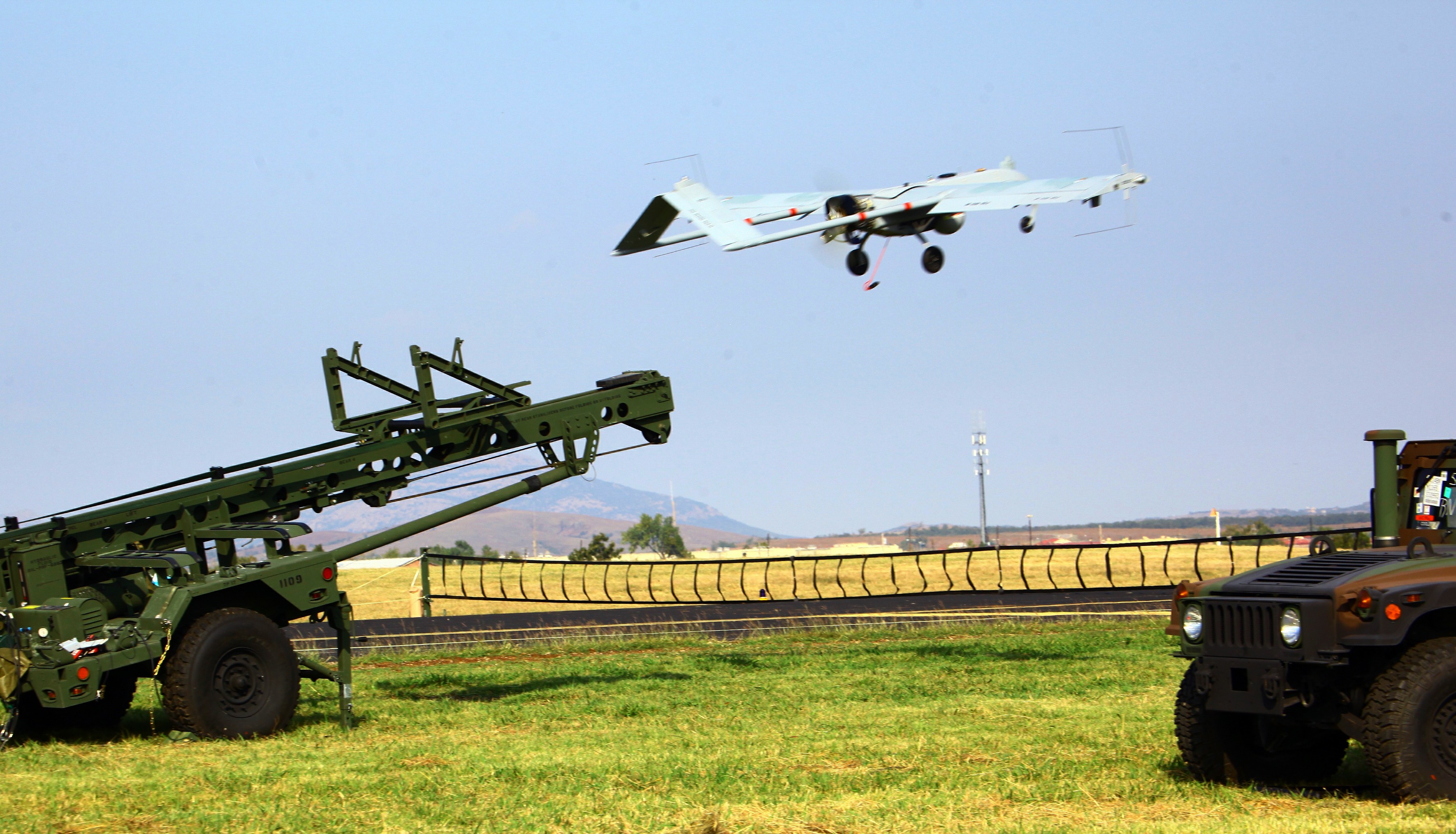Many types of military aircraft use Fort Sill's Henry Post Army Airfield, however, the past couple weeks there was a different kind of plane flying around the post. The Oklahoma Army National Guard flew an unmanned aerial vehicle as part of its training for an upcoming deployment.
About 35 Soldiers from Company B, 45th Brigade Special Troops Battalion, 45th Infantry Brigade Combat Team (IBCT) set up, flew, received data feeds, recovered and maintained an RQ-7B "Shadow 200" tactical unmanned aircraft system. The Norman, Oklahoma-based Soldiers will put their training to work next year when they deploy to Afghanistan as part of their 3,500-Soldier 45th IBCT deployment.
"I wanted the Soldiers to get comfortable with their equipment, to get familiar exactly with what they will be deployed with," said 1st Lt. Jeremy Spearing, Company B commander. "This is just step one. They'll do this a hundred more times before we actually go in-country."
The Shadow surveillance platform provides real-time imagery of geographic areas to Soldiers before they can on their missions, he said.
"They'll know exactly what they're going in to so they can create their plan based off what's going on that very moment," Spearing said.
The unarmed aircraft carries an electro-optical and infrared camera, which provides a real-time video signal to ground control centers during day or night.
"It would be just like watching TV," he said.
An array of parabolic dishes and antennas were set up as part of the support system it takes to fly the Shadow.
Ground terminal dishes sent and received data to the Shadow during flight, said Pfc. Phillip Ostrander, UAV operator. Other antennas served as secondary data receivers and automatic landing systems, and there was a weather station, all linked to portable ground control stations on Humvees as well as a mission control tent.
The Shadow system is a great asset to have on the battlefield, said Ostrander, of Tahlequah, Okla. He said he was looking forward to the deployment.
"It's our pleasure to be able to do it and watch over our Soldiers and keep them safe," he said.




Social Sharing